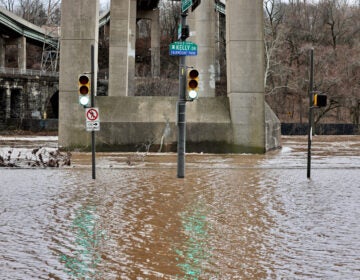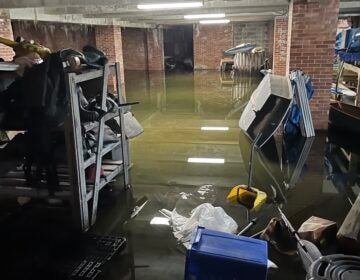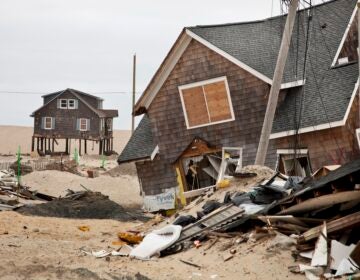East Falls, Manayunk publish flood mitigation study 3 years after Hurricane Ida
Situated along the Schuylkill River, East Falls and Manayunk are prone to serious flooding.
Listen 1:19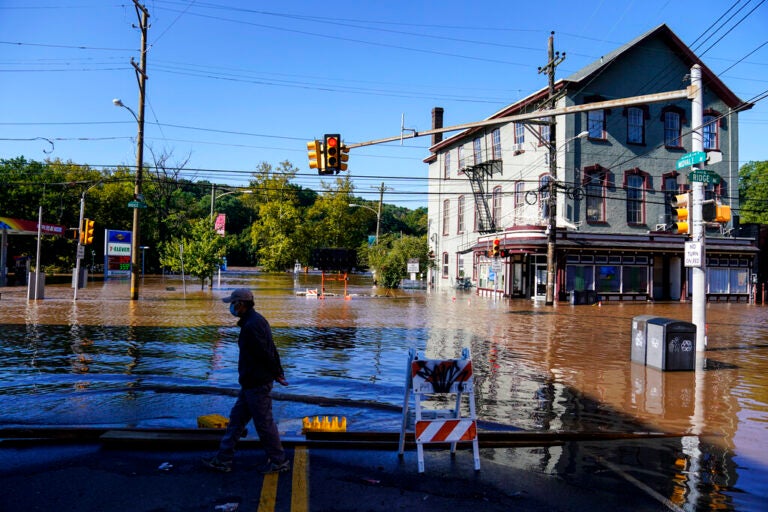
A person walks on a flooded street as the Schuylkill River exceeds its bank in the East Falls section of Philadelphia, Thursday, Sept. 2, 2021 in the aftermath of downpours and high winds from the remnants of Hurricane Ida that hit the area. (AP Photo/Matt Rourke)
This story is part of the WHYY News Climate Desk, bringing you news and solutions for our changing region.
From the Poconos to the Jersey Shore to the mouth of the Delaware Bay, what do you want to know about climate change? What would you like us to cover? Get in touch.
During the wake of Hurricane Ida, residents and businesses in Philadelphia’s East Falls and Manayunk neighborhoods were blindsided by heavy flooding — the magnitude of which hadn’t been reported in 100 years.
The damage caused by the high waters forced some businesses in the popular shopping and dining hubs to close for almost a year.
Three years after Ida, the East Falls and Manayunk development corporations have made recommendations to prepare for future storms, and mitigate severe flooding. The 72-page study outlines short-term solutions such as evacuation plans, and long-term road and stormwater infrastructure projects that would require significant funding and resources.
“Things are not going to change. There’s no magic bullet to fix everything. This is something that we’re going to have to learn to live with,” said Gwen McCauley, executive director of the Manayunk Development Corporation. “I think we can do better. We can be stronger in our response.”
Situated on the banks of the Schuylkill River, East Falls and Manayunk are prone to flooding. The effects of climate change, from more intense rainfall to increased storms, may put the neighborhoods at greater risk in the future.
Projections show East Falls and Manayunk have a serious risk of flooding over the next 30 years.
According to the Federal Emergency Management Agency, the neighborhoods are in the 100-year floodplain, meaning in any given year they have a 1% chance of flooding, and over the course of a 30-year mortgage, there’s a 25% chance of flooding.
However, the agency’s national flood maps are outdated and they don’t take into account environmental changes, such as sea level rise and changes in rainfall.
“Either way, if we’re using outdated data, or new data, or future-looking data, East Falls is certainly low lying and they’re at risk of flooding just being right on the banks of the Schuylkill,” said Elaine Montes, program manager for flood resilience and compliance strategy at the city’s Office of Sustainability.
Residents and business owners worry about the next big storm, and how to protect themselves and their properties, said Michelle Feldman, executive director of the East Falls Development Corporation.
“I think it’s always something that’s a concern, especially during hurricane season — like now. I do think when the weather forecast for two or three days of rain, our Spidey sense sort of starts to tingle for sure,” Feldman said. “Especially because the best weather predictors aren’t always accurate anyway, until it’s raining outside, you don’t really know what’s going to happen, which makes preparation all the more important, but also all the more difficult.”
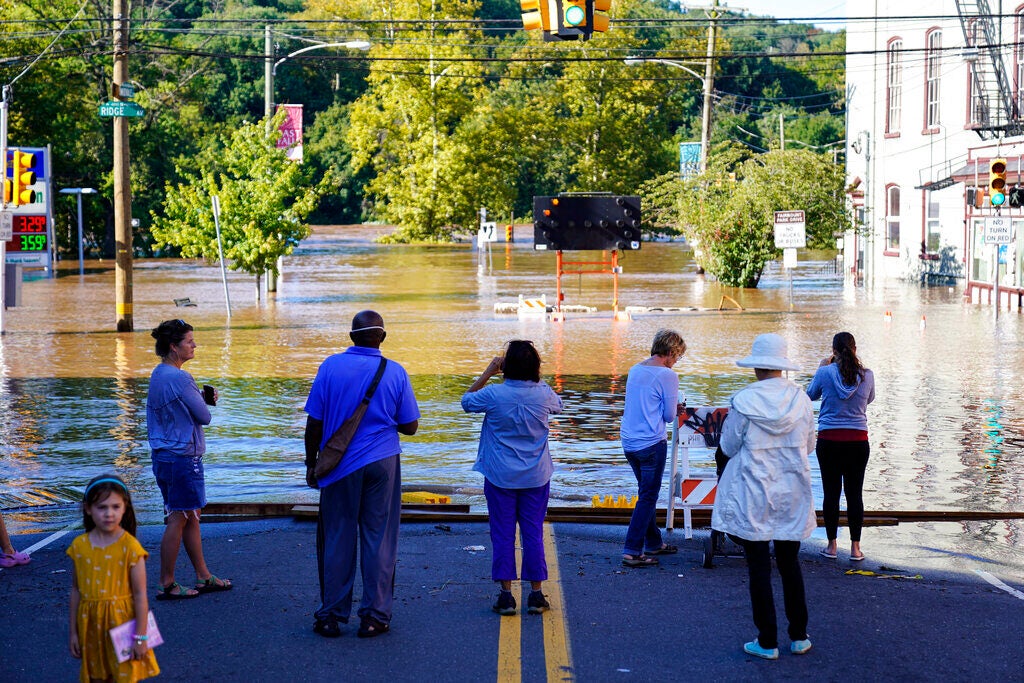
These fears helped spark the need for the flood mitigation study, which was compiled with the help of feedback from residents, business owners and emergency management experts, Feldman said.
Among the near-term solutions outlined in the new report include developing evacuation plans that detail safe travel routes, and implementing a hyper-local warning system that individualizes the needs of the East Falls and Manayunk neighborhoods.
Other suggestions include monitoring storm drains for clogs caused by trash and sediment, which can exacerbate flooding impacts.
The study also lays out long-term and costly infrastructure projects, such as raising flood-prone Kelly Drive, which connects the neighborhoods to Center City and areas of North Philadelphia.
Recommendations also include improving stormwater infrastructure to prevent floodwaters from backing up into the storm sewer system when it rains. Currently, outfalls along the Schuylkill River are prone to submerge during a flood and back up into the storm system.
“This study is really just the start. We completed a study that I think is a wonderful tool kit,” Feldman said. “But now the work continues to try to tick off some of those recommendations, and make sure that we’re working with our partners … and bringing in resources here to help fix this problem and implement the solutions.”
Montes from the city’s Office of Sustainability said she encourages anyone who lives in or owns businesses in flood-prone communities to secure flood insurance, place valuables on higher levels of their properties, and to sign up for ReadyPhiladelphia alerts.
“Be aware of what those flood risks are, asking your realtors, asking your insurers, ‘Have you seen flood damage on this property before?’ And just understanding what your risk is, and what’s been seen on your property previously,” Montes said. “Any way that we can continue to push that message out and just having people aware of different climate hazards, is just something that we really want to communicate.”

Get daily updates from WHYY News!
WHYY is your source for fact-based, in-depth journalism and information. As a nonprofit organization, we rely on financial support from readers like you. Please give today.



